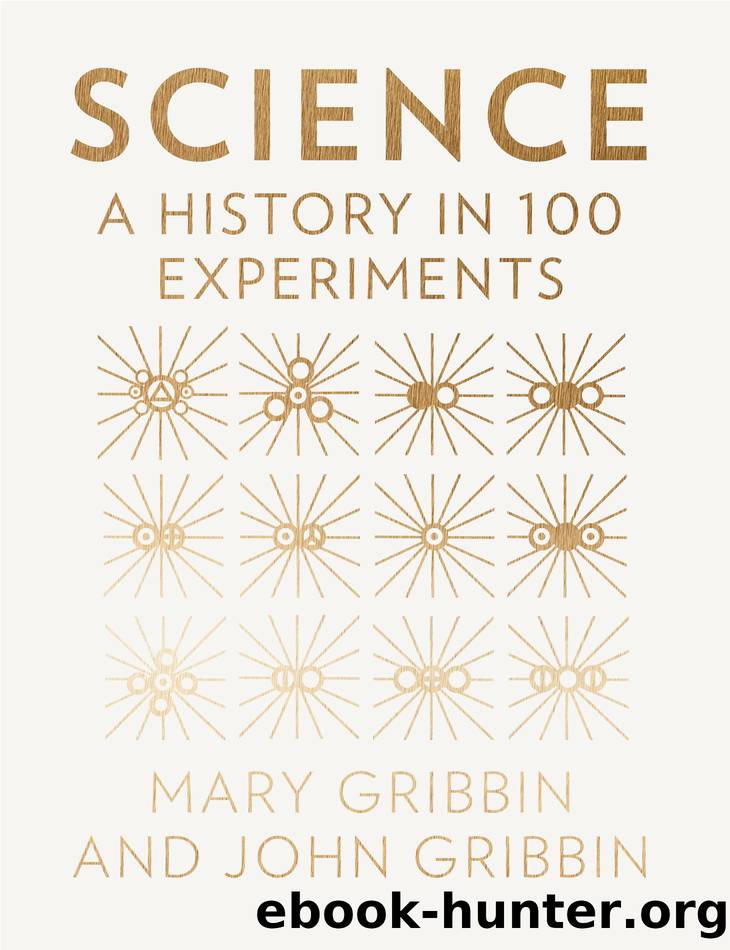Science by John Gribbin

Author:John Gribbin
Language: eng
Format: epub
Publisher: HarperCollins Publishers
Published: 2016-07-31T16:00:00+00:00
No. 53
SPARKING RADIO IN TO LIFE
Electromagnetism, Maxwell’s equations, and light were all cornerstones of scientific experiment and research in the late nineteenth century. At the same time that Michelson and Morley were carrying out their experiments in what proved a futile attempt to find evidence for the ether, the German physicist Heinrich Hertz was making a breakthrough which not only provided further proof of the accuracy of Maxwell’s theory, but opened the way to modern communications.
When Maxwell found that the equations that describe electromagnetic waves determined that these waves must travel at the speed of light, he not only concluded that light must be a form of electromagnetic wave, but predicted that ‘other radiations’ could be ‘propagated through the electromagnetic field according to electromagnetic laws’ (see here). It was these other radiations, now called radio waves, that Hertz discovered in the mid 1880s.
Following in the footsteps of Michael Faraday (see here), Hertz had been carrying out experiments involving induction using a pair of Reiss spirals – coils of wire wound like a solenoid with their ends connected to metal balls separated by a small gap. He noticed that when electricity from a storage device known as a Leyden jar was discharged into one of these coils (via the metal balls), a spark jumped across the gap in the other coil, even though the two spirals were not physically connected and were not – as in Faraday’s coils – wrapped around a shared iron rod. Some influence had travelled through the space between the spirals to make the second one spark in response to the activity of the first one.
In order to investigate the phenomenon, Hertz scaled up his experiment. He used an electric generator and an induction coil to make sparks not in a Reiss spiral but across a gap in the middle of a piece of wire two metres long, ending in spheres 4 millimetres in diameter. The long wire acted as a radiator for electromagnetic energy (in modern language, the antenna of a transmitter). The electric current associated with the sparks bounced to and fro along the wires. Various pieces of equipment were used to detect the waves being radiated by the antenna, the simplest being a piece of copper wire, 1 millimetre thick, bent into an almost complete circle 7.5 centimetres across. There was a small brass sphere on one end of the wire; the other end was pointed, nearly touching the sphere. The adjustable gap between the point and the sphere was typically a few hundredths of a millimetre. Sparks leaping across the gap in the transmitter produced corresponding sparks in the receiver, and by moving the receiver to different distances from the transmitter, over a range of a few metres, and measuring the strength of the response, Hertz could measure properties of the waves being radiated. He also carried out experiments in which a zinc plate was used as a reflector to generate standing waves for study.
© NYPL/Science Source/Science Photo Library
Illustration of the apparatus used by Heinrich Rudolf Hertz (1857–1894) to discover radio.
Download
This site does not store any files on its server. We only index and link to content provided by other sites. Please contact the content providers to delete copyright contents if any and email us, we'll remove relevant links or contents immediately.
Thinking Better by Marcus du Sautoy(608)
Invention by James Dyson(559)
Wanting by Luke Burgis(545)
The Ten Equations That Rule the World by David Sumpter(525)
Concepts of Space by Jammer Max;(520)
Merchants of Doubt by Erik M. Conway(512)
How We Got to Now by Steven Johnson(508)
The Smallest Lights in the Universe by Sara Seager(449)
God and the Multiverse by Victor J. Stenger(448)
Factfulness by unknow(439)
Ancient Knowledge Networks by Eleanor Robson;(410)
Floods, Famines, and Emperors: El Nino and the Fate of Civilizations by Brian Fagan(397)
On Creativity by Bohm David(396)
The Science of Being Lucky: How to Engineer Good Fortune, Consistently Catch Lucky Breaks, and Live a Charmed Life by Peter Hollins(388)
The Oxford Handbook of Philosophy of Mathematics and Logic by Stewart Shapiro(388)
The Scientist and the Psychic by Christian Smith(384)
Flood by Design (Design Series) by Mike Oard(368)
The Surrender Experiment by Michael A. Singer(367)
Science by John Gribbin(359)
